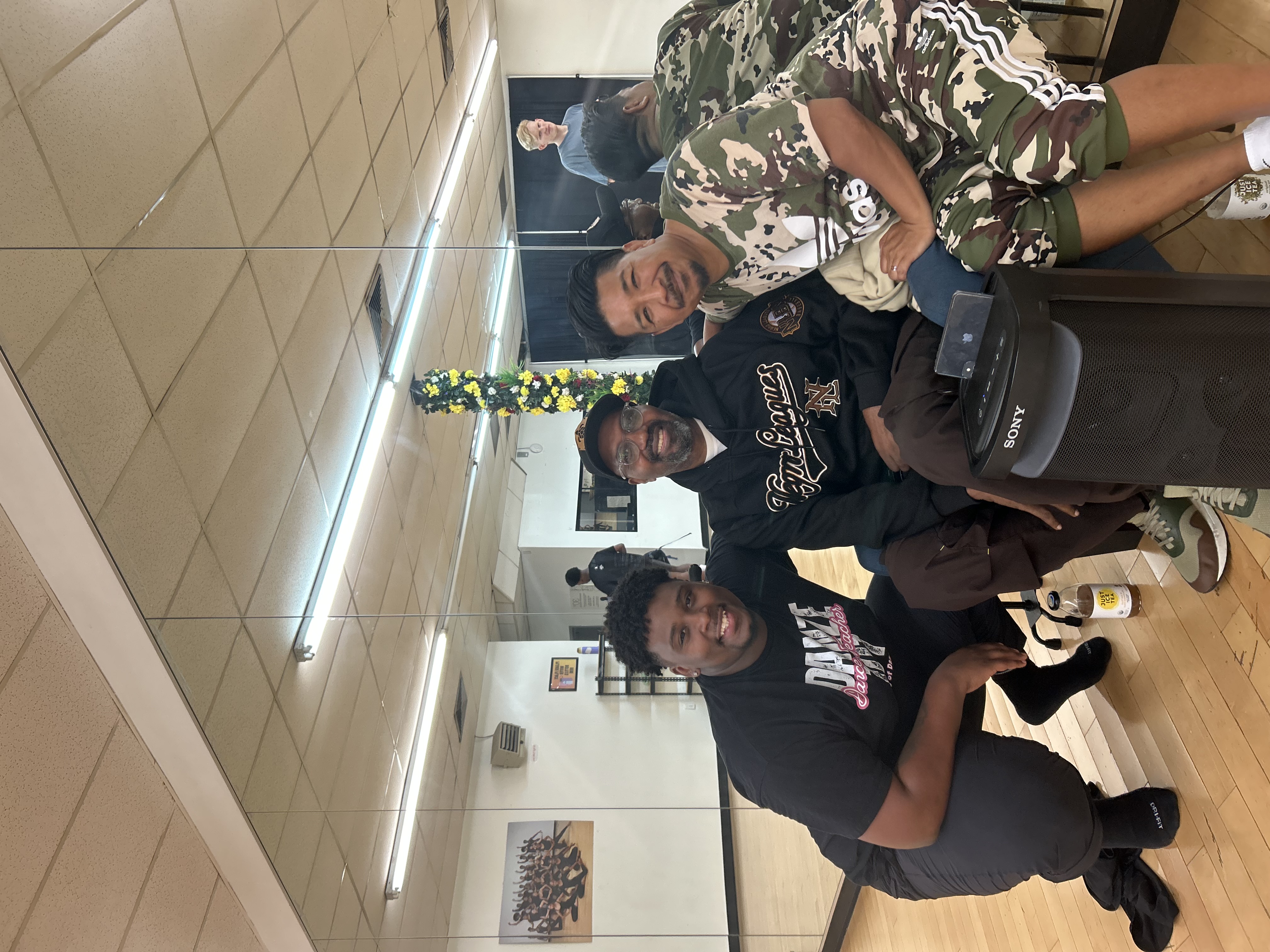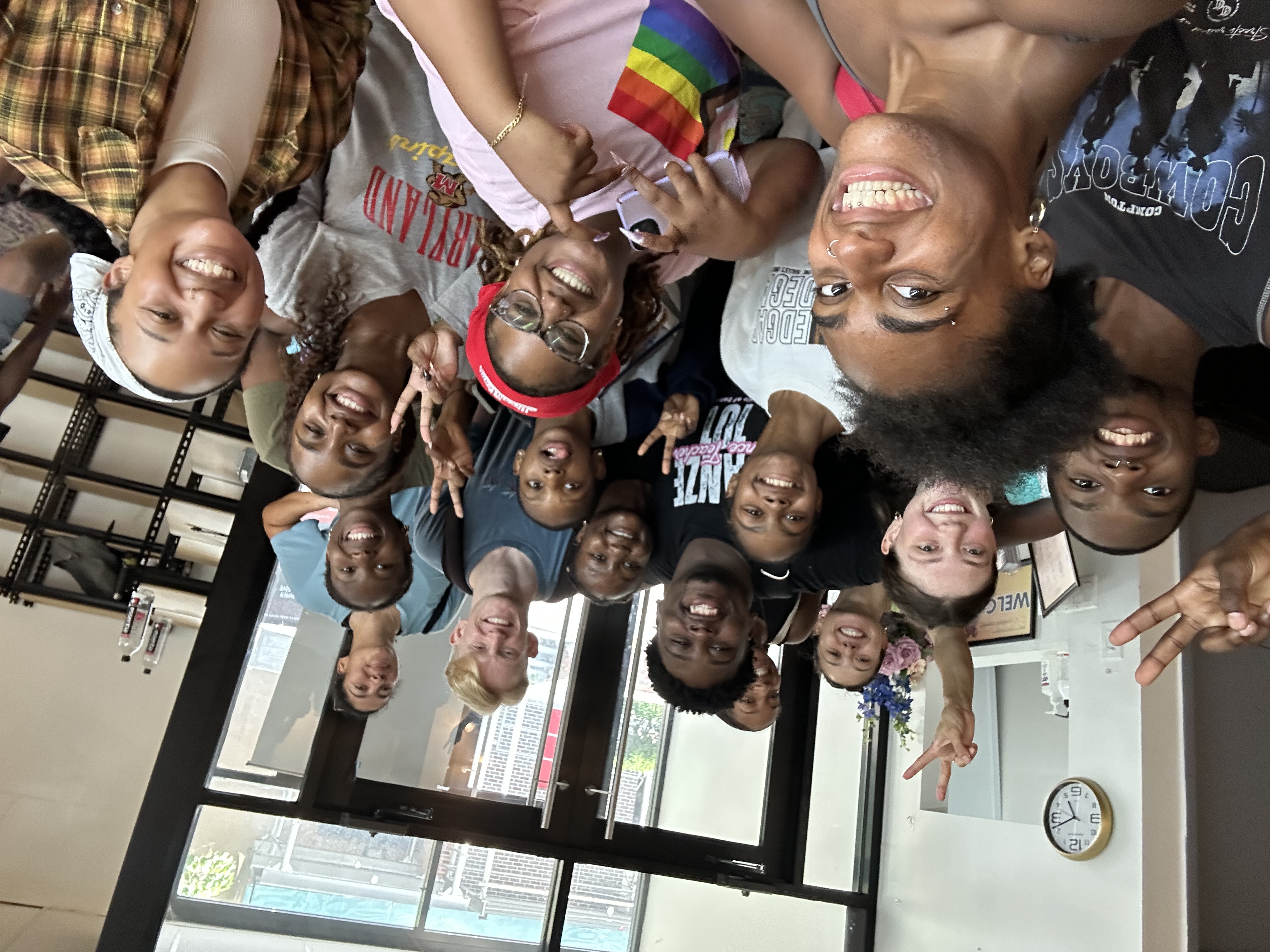School of Performing and Visual Arts
Faculty Feature: Derreck Williams
Page Content
Derreck Williams, Assistant Teaching Professor of Dance at the University of Southern Mississippi, recently attended the prestigious EVIDENCE Dance Company’s 20th Annual Summer Dance Workshop and Intensive in Brooklyn, NY. At this workshop, Professor Williams learned from EVIDENCE Dance Company founder Ronald K. Brown as well as many guest artists and teachers. We sat down with Professor Williams to learn more about his experience and how it has impacted his dance practice and pedagogy.
As a dancer, what sort of choreography and research do you gravitate towards?
My choreography and interests all intersect in what I call Black dance. I am very interested in dissecting the African diaspora and understanding where my voice as an African American male from the South falls within that continuum. HBCU majorettes, which are really prominent down here in the South, are actually my main research focus. Even though it is a highly feminine dance style, it is really interesting to see how Black men are able to influence this space and how our voices can add to that conversation.
Tell us about Ronald K. Brown’s approach to dance.
Ron’s movement is so hard to define. It’s heavily rooted in Afro-Cuban dance, but there are so many other influences to his movement as well, such as jazz, ballet, hip-hop, and house dance. But his movements come from a very grounded space; Ron believes that everyone can dance, so everyone should be dancing. Because of his philosophy, his movements are often as small as simple arm gestures. It was very liberating to learn from him because it took me out of the mindset that every movement has to be perfect, or I have to go 110% every time I do something. He lives and breathes the idea that less is more.
Where do you see the overlaps between your dance practice and the EVIDENCE dance method? 
We both believe that dance is dance and that you shouldn’t have to codify it into specific genres. When you dance, you are showing up as you—it's always going to be different from everyone else. I also appreciate how the communal aspect is something that is really big with EVIDENCE. I'm all about creating community in the classroom. In my classes, we often dance in a circle so that we can pay attention to one another rather than looking at ourselves in the studio mirror. And to see Ron leading class that way as well reaffirmed so many things aspects of my pedagogy for me.
How do you plan to bring what you learned back into your classroom?
I'm teaching Modern Dance I and IV, this semester, and my goal is to take the knowledge and material that I've gained from this experience back into our space and challenge our student’s perceptions of modern dance. A lot of times modern dance gets a bad rep, but I had a trial run with the EVIDENCE Dance Method yesterday, and the kids were so excited to experience his approach to modern dance. Whenever time and casting numbers permit, I would love to do a work that is inspired by Ron, my experience in New York, and all the things that I've learned. It will be a very large, celebratory production.
How does learning this method and teaching it to students help prepare them for the professional world of dance?
I think it gives them another lens and space to explore the possibilities of dance. It was important for me to go to this intensive, because I want to be able to bring something different to bring back to them. As a teacher, I always believe that it's important for you to be growing just as well as your students, so it's my job as an instructor to go out into the world, learn, and bring this knowledge back to my students. The field of dance is always changing, so it is important that I go into these other dance spaces and learn how to best prepare my students fort the professional. For example: when I was a student, I never wanted to dance professionally because the professional field demanded that you practice ballet, and I'm not a ballerina. But now, the African diaspora is influencing a lot of these spaces, so students need to learn dance styles and techniques that are influenced by this movement.
